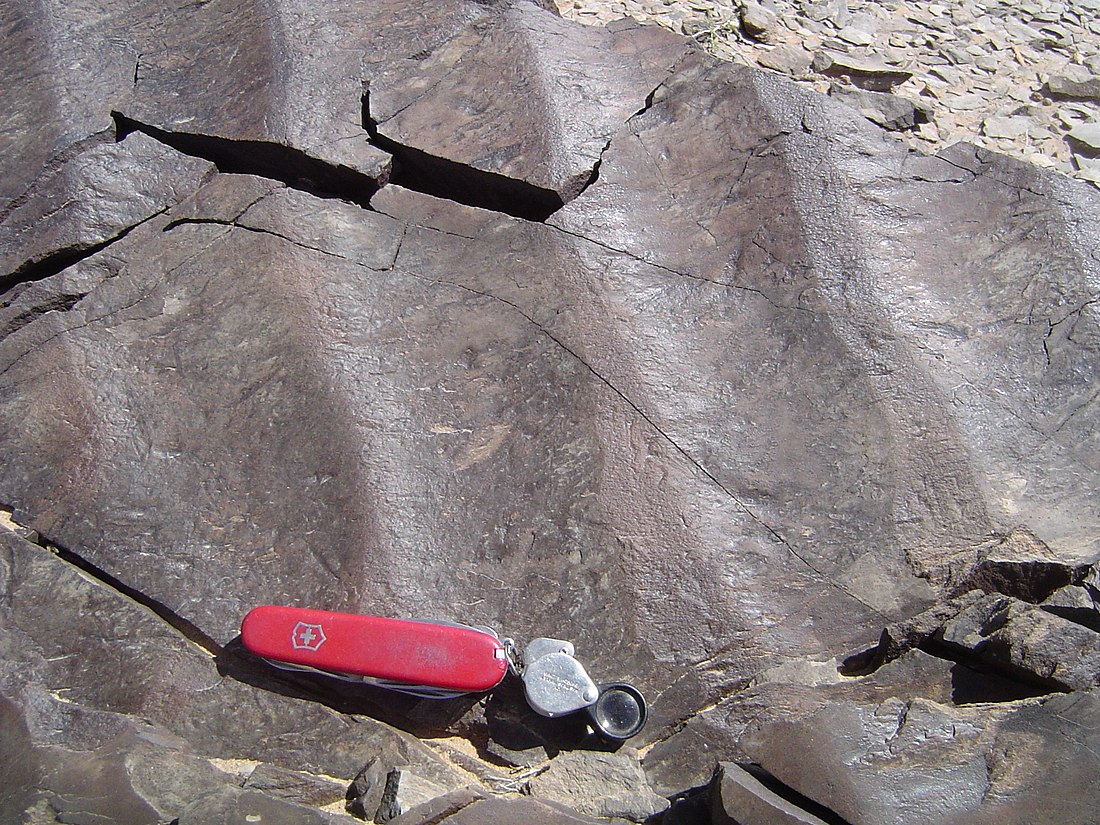Top Qs
Timeline
Chat
Perspective
Paleocurrent
Geological indicator of water flow From Wikipedia, the free encyclopedia
Remove ads
A paleocurrent or paleocurrent indicator is a geological feature (typically a sedimentary structure) that helps one determine the direction of flowing water in the geologic past. This is an invaluable tool in the reconstruction of ancient depositional environments.[1]

There are two main types of paleocurrent indicators:
- Unidirectional, which give a clear, single direction of flow
- Bidirectional, which give a good linear direction, but it is unclear which direction along the linear trend the water flowed.
Paleocurrents are usually measured with an azimuth, or as a rake on a bedding plane, and displayed with a Rose Diagram to show the dominant direction(s) of flow. This is needed because in some depositional environments, like meandering rivers, the paleocurrent resulting from natural sinuosity has a natural variation of 180 degrees or more.[2]
Below are a partial list of common paleocurrent indicators:
Remove ads
Unidirectional

- Cross-bedding – the axis of a trough cross bed or the down-dip direction of a tabular cross bed point the direction of paleo flow.
- Current ripple marks – will have the short side of the ripple pointing down stream.
- Sole markings/flute casts – the short, steep side will point up stream, and the long, tapered side points down stream.
- Imbrication – clasts line up in the direction of flow.
Remove ads
Bidirectional

- Symmetrical ripple marks – flow is perpendicular to the ridge crest.
- Tool mark – flow is along the mark.
- Parting lineations – flow is along the grains.
References
Wikiwand - on
Seamless Wikipedia browsing. On steroids.
Remove ads
